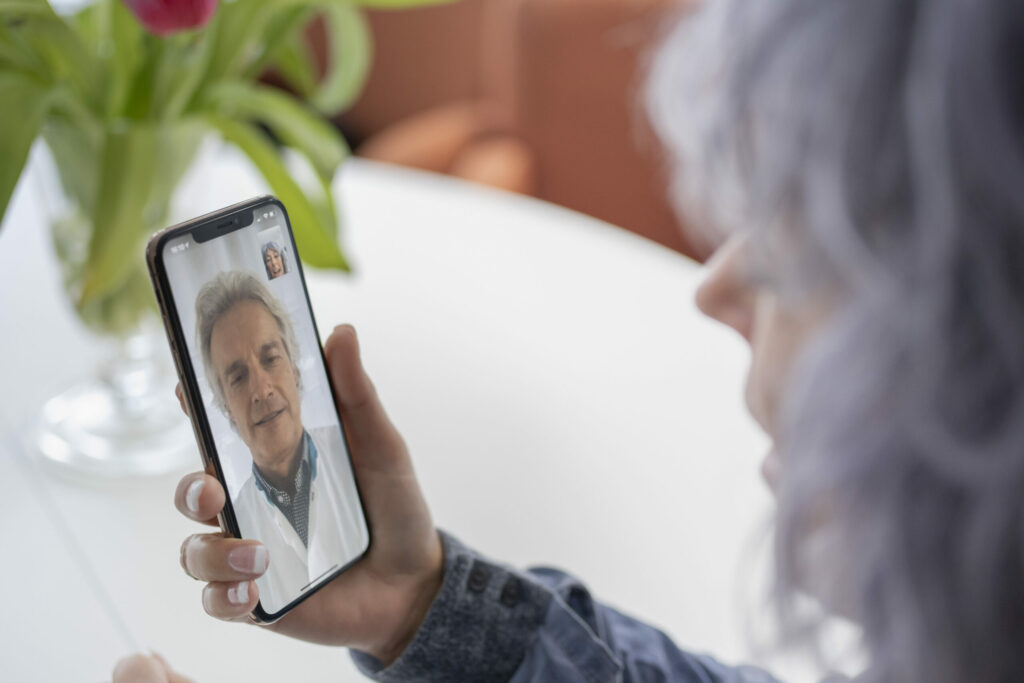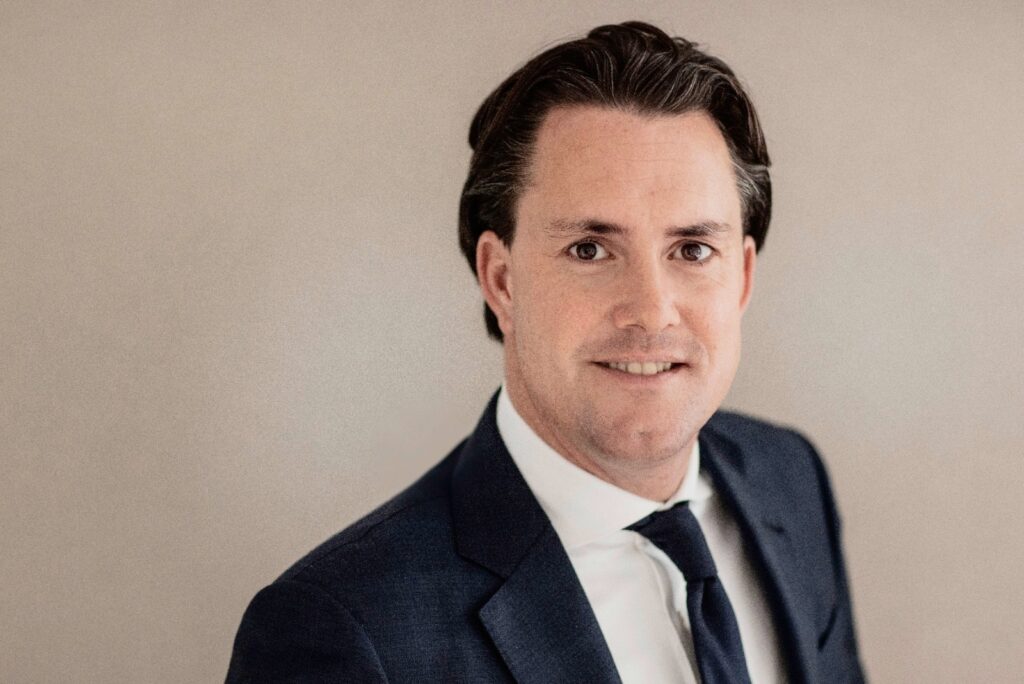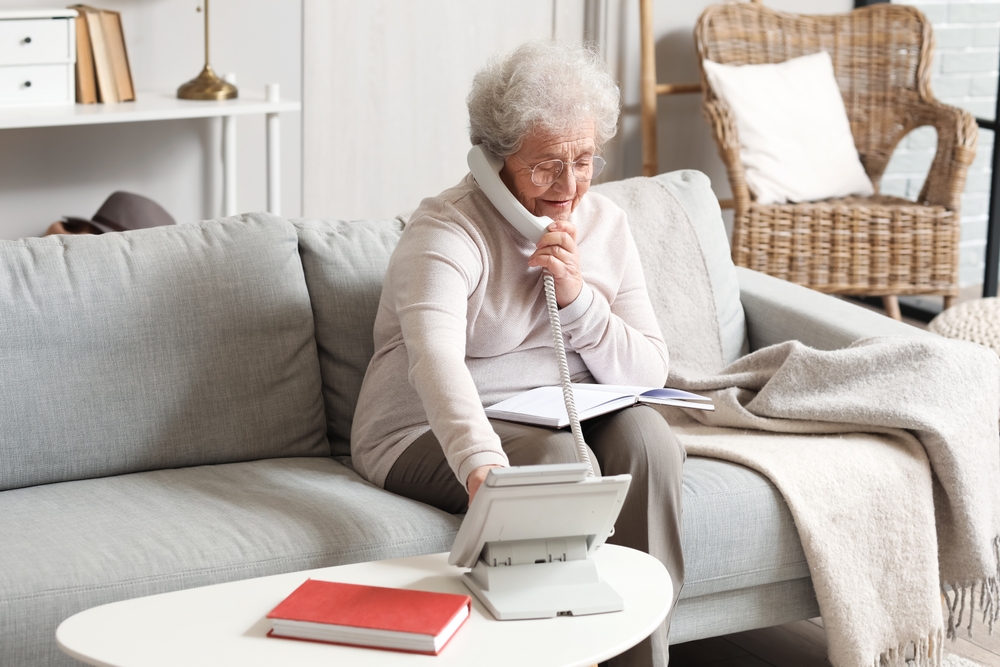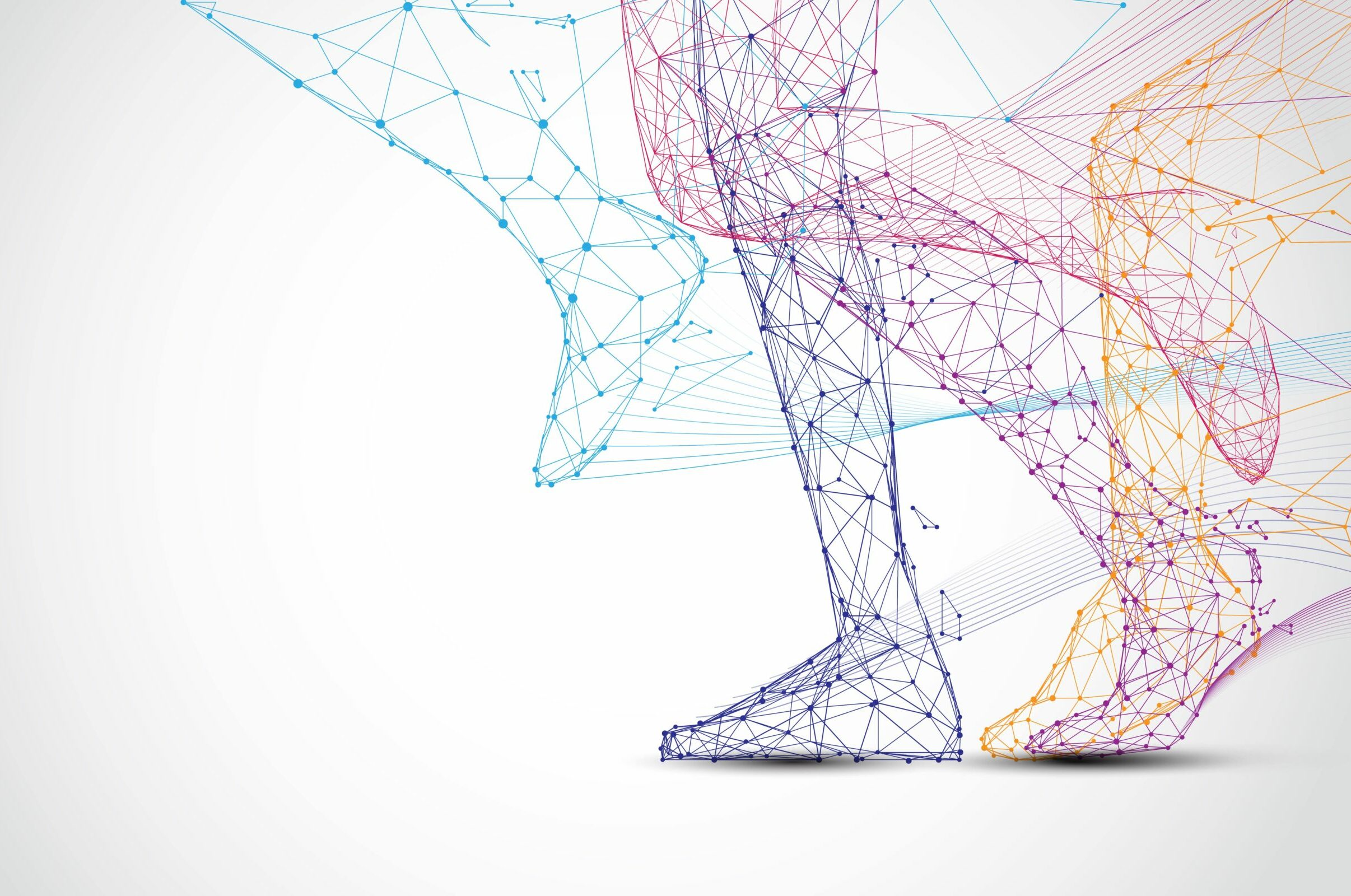The future of care

An ageing population means doctor and hospital visits are rising, putting a strain on under-resourced healthcare providers around the world. Dutch company Luscii believes its app, which allows doctors to monitor their patients remotely, has the answer. We spoke to its founder and CEO, Dr Daan Dohmen.
The world is getting older. According to the Office of National Statistics, the number of people aged over 60 globally will rise from the current 12.3% to 21.3% by 2050. An ageing population means an increasing demand on health services, with 29% of people in the UK aged between 60 and 64 suffering from two or more chronic conditions; a figure that rises to almost half in those aged 75 and over.
Not only does that put a strain on GP surgeries and hospitals but regular visits can take a toll on patients. No one, after all, likes going to the doctor. The Netherlands has been tackling this issue head-on. Luscii, a remote healthcare platform that was designed in the Netherlands, is currently used in over half of Dutch hospitals. Its goal is to reduce unnecessary GP contact, reduce A&E visits and reduce the length of patient hospital stays.
The Luscii app is designed to allow patients to take on a more active role in their own healthcare, measuring their vital values at home each day and answering questions about their well-being. From this data, the patient receives direct and personalised guidance for their condition. A proprietary AI within the platform monitors for any sign of measurement abnormalities which could mean medical attention being required. When this happens, the platform instantly alerts specialists so they can make immediate contact with patients via chat or hi-res video connection. In emergencies it can be escalated to have the patient to a medical facility.
Luscii’s technology is now playing a growing role in chronic care in the United Kingdom. All Together Better, a Sunderland-based alliance of NHS commissioners and healthcare providers, has deployed the platform for high-risk, isolated and anxious pulmonary patients who require continuous monitoring.
Now, patients only come in at the moment that there's actually a problem. That way, the doctors have more time to really focus on the patients that need focussing on
TFG: I’m interested in your background, Daan. You worked in a nursing home when you were younger and that inspired you to get into patient care?
Daan: Yeah. I wanted to become a doctor from around four or five years old; I’m from a family with a lot of doctors. And that was what I wanted to do. So when I was 15, 16, I first started working in a nursing home as an assistant. I wanted to study at medical school but in the Netherlands it’s done on a numbering system, which is a lottery, and I got the wrong number. So that’s how I ended up in technical medicine – a combination of healthcare economics, medicine and technology. So that was actually how it all came together.
TFG: What did that time spent working in a care home teach you?
Daan: One of the big things I learned in the care home was from an elderly lady, who was around 83. She was in a wheelchair and had this thing around her neck, and one day we went together to a grocery store next to the nursing home. And it was like a secret because we were not allowed to go there because she had to buy her stuff in the nursing home. But when we came to pay the wheelchair got stuck by the check-out. She had to be freed by other staff from the nursing home, and I thought she’d probably had the worst time. But she said to me, “Well, Daan, this was the nicest thing I’ve done in the last 10 years, because the only thing I’m allowed to do is sit in my room and wait until the nurses come”. Maybe it’s a little bit dramatic, but I thought, well, what if we can use the power of patients to become a little bit independent? That would save a lot of time for nurses and doctors to spend on the patients that really need it. And that’s actually how the journey started.
One of the most important things that I learned is that in general in healthcare we were sometimes – and maybe still are – making people really dependent on the healthcare system. And that’s not because we want to do that, but that’s just the nature and culture of how a lot of healthcare works. We have to take care of you, which is true. But then when you look at the future, you see that we simply won’t have enough carers and doctors to help all the elderly and all the chronically ill people, due to the ageing population. So I think we should rethink how healthcare can be done.
TFG: Has the advancement of technology been integral work you’re doing at Luscii?
Daan: The fact that people do have devices that give them access to this kind of service is important. And we’re seeing that doctors and nurses feel and experience more and more that some care can be given remotely. Having a video chat with the patient in some settings can be as good as asking the patients to come to the hospital, and it will save a lot of time for patients.
The problem that Luscii is really solving is that currently in a lot of settings, when you’re a patient, the doctor will tell you to come back in three or six months for your next check-up. But actually that doesn’t really make sense because for some patients, maybe you want to see them in three days because there’s a problem and things are not going well. Or for other patients you might not need to see for two years because everything is okay. So what we are doing with Luscii is putting the technology in place that offers a 24/7 connection to the doctors and the nurses which means patients can still live independently and not feel they have to visit their doctor or the hospital all of the time, but know they can do when they most need to.
In the app the patients can do their own measurements, inform us how they feel, fill out the questionnaire or provide photos of some medication. With all of the data that is generated, the doctor can assess whether there is an increased risk with their patient. If that’s the case, they can set up a connection to the patient. I think that’s the biggest thing that we are doing right now. For instance, in Amsterdam, there are a lot of people in a virtual cardiology clinic that we support there. And instead of all those patients getting in every three or six months now, the patients only come in at the moment that there’s actually a problem. That way, the doctors have more time to really focus on the patients that need focussing on.
TFG: So the essence of the app is making sure that doctors’ and nurses’ time is better spent on people who really need it?
Daan: Exactly, exactly. At the beginning the patient might think they won’t get to see their doctor, so there is scepticism. But what we give back to the patients is that they get a direct and instant contact at the moment they need it. So yes, you might not see your doctor physically every six months but if you need to see them today, they will be in touch immediately.

TFG: What kind of problems are hospitals asking Luscii to solve when they get in touch with you?
Daan: The biggest challenge I think for a lot of hospitals or acute care systems is that A&E visits are rising. So how can you reduce the number of A&E visits and still help doctors to be supportive? And then the second one is how do you reinvent hospital admissions since they’re very costly and time consuming, and I’ve never met a patient that likes to be in a hospital, so they want to be at home. So that’s the biggest challenge. How can we prevent hospital admissions, but at the same time how do we make sure that we improve the patient experience? We want to provide 24/7 care but allow patients their independence.
TFG: To talk more specifically, what sort of data are patients entering?
Daan: We are able to build tailor-made programs. So we define digital care pathways. Let’s say for people with respiratory problems, people with heart failure and hypertension; depending on the situation they are in they will be prompted by the system to fill in their blood pressure, send in their oxygen saturation, and fill out a questionnaire with some questions about how they’re feeling; for example are they experiencing pain? We also provide them with educational lessons, which include watching videos on how to deal with their energy levels if they have certain illnesses. We advise them on healthy habits and healthy foods that will help their specific ailment. So it’s a combination of support and coaching people to become independent or deal with their situation.
TFG: Is the data filtered for the doctor?
Daan: Our artificial intelligence, which sits inside the platform, will get those data points from the patient, and then it will run algorithms. Sometimes they’re really simple – a patient’s blood pressure’s going up will be flagged to the doctor, for example. Or sometimes it’s more complex, such as a combination of measurements in a certain timeframe that might be changing, or there’s a negative trend. Then the doctor can reach out, or we can ask Luscii to take actions, such as sending a message to the patient to take a certain medication, or provide more information.
One of the things that we’re trying to do is improve those algorithms over time to make it even smarter. So when we started it was very simple alerts, like, ‘Hey, your levels are still high. Look at it’. And now over time, when we have more validation and clinical evidence, it’s getting smarter and smarter.
TFG: Some people are just naturally suspicious of using anything that involves AI. How do you convince patients that they’re signing up to something that will look after them when they most need it?
Daan: There’s one thing we do that’s maybe funny, but we use the power of the patient. This can sometimes be scary for the doctor or nurse, but we have experience in this: and that’s asking the patient if they want to have a direct contact with a doctor or a nurse whenever possible. A lot of doctors and nurses are concerned that people will say yes all the time, and be constantly contacting them. But the reality is that in the Netherlands it doesn’t get misused – it’s only used when the patient really needs to get in touch, and they don’t keep asking unnecessary questions. That comes from explaining to them exactly what it’s used for. So it’s giving power to the patient and trusting them to not misuse it.
TFG: This move to remote care is a big change of culture for doctors. How are they adapting to it?
Daan: When COVID hit the Netherlands there was no ability for people to come to the hospital. So that demonstrated, ‘Hey, what are other means to still keep in touch with our patients and be able to help them?’ If I’m a doctor, I want to have all my patients in scope. I want to be able to contact them easily if needed. And I don’t want to spend a lot of time handling alerts and all that kind of stuff. So this allows doctors to give more specific care to patients who most need it.
My team and I did ride-alongs in Sunderland, one of our projects in the UK, with patients who had been discharged from hospital and then had a recovery-at-home team. But that team can’t stay with the patient, or keep an eye on them, because there was no capacity. But now they are using Luscii, so when the recovery-at-home team leaves the patient is left with Luscii. This means the patient knows they are being kept an eye on, and if they deteriorate the hospital will be in touch immediately.
The biggest challenge I think for a lot of hospitals or acute care systems is that A&E visits are rising. So how can you reduce the number of A&E visits and still help doctors to be supportive?
TFG: Tell us a bit about how Luscii has been used throughout the pandemic?
Daan: During the first wave we saw that in every country we have presence in, such as Ireland, Netherlands, Nigeria, Kenya, Ghana, and other countries, we saw that a lot of people were really afraid or anxious about COVID. There were a lot of things unknown, but we provided a very easy way to connect with a care professional, but in a very efficient manner. So to give you an idea of the numbers, when we started, we had 50 doctors sitting behind screens calling 20,000 users. That was in the first days. Then once our algorithms were more intelligent, because we’d obtained more data, we had 160,000 users, but needed only eight doctors sitting behind the screens. The rest was handled by the system, which sends automated messages like ‘You should check up with your GP’, or ‘You should ask for tests’.
TFG: Where do you want to take Luscii in the next five years?
Daan: I think the most important thing is that we are expanding our footprint. We’re currently connecting with one or two hospitals per month, so this means we have direct integration into their EMRs [Electric Medical Records]. Then we start with one or two departments, and this can be cardiology or pulmonology or paediatric care. So expanding the footprint is important to let people experience that they really can deliver care remotely. And then the second one is that we are improving our programs and we are doing that in close cooperation and co-creation with the doctors and the nurses. So they are the architects of this digital capital base.
TFG: With an ageing population, will remote aftercare become even more important?
Daan: Yes, I think so. The most important thing is that this is not a technology thing. We make technology and that should be very good. But the real thing is that we ensure we integrate really well in the care processes, so that it adds value for both the patient and the healthcare professionals.



